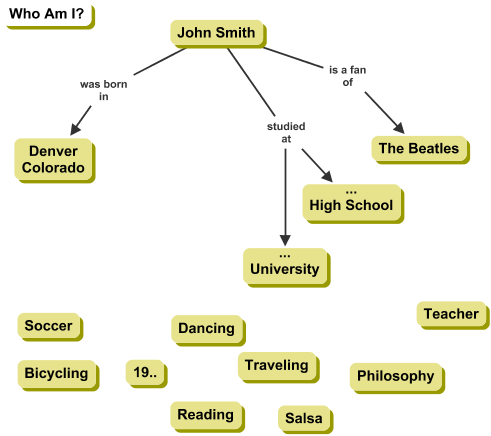
Learning to build good concept maps require practice. When we see "good" concept maps, we are attracted by their simplicity and the clear form in which they express their content and we get the impression they are easy to build. However, it frequently happens that when we build our first concept we find out that building "good" concept maps is much more difficult than we expected. Our experience has shown us that with time and dedication, everybody is able to build good concept maps. We have also learned that feedback regarding our concept maps from peers with more experience in concept mapping helps us fix errors, not so much on the content but on the structure of the map.
Learning to build concept maps is like learning how to write. Just like we need to dominate grammar and spelling to be able to express ourselves well in English independently of the content that we want to express, we need to learn the 'grammar and spelling' of concept maps to take advantage of their expressive power.
In this document we present exercises that can help you in the practice of building concept maps. In complementary documents we describe What is a Concept Map? and how to go about Constructing your First Concept Map.
We recommend that your first concept map be about a topic you are familiar with, that does not require doing any research or new learning about the topic of the map. A topic that is known to all of us is a concept map about ourselves. Its like a "curriculum vitae" but in the form of a concept map. The focus question is clear, and we know the answer.
Start with an initial list of concepts: your name, studies, job, etc. Organize them according to the guide mentioned above. Figure 1 shows an example of a "Who Am I?" concept map in progress. Some of the concepts have been linked already to the root of the map, while others are waiting to be incorporated into the map.

Figure 1. Concept map in progress on the focus question "Who Am I?"
As an alternative for your first concept map, or as a second map, select a topic which which you feel comfortable. Once you have picked a topic, make yourself a question about the topic that will serve as your focus question -- the question that you will attempt to respond through the concept map. The type of question will determine to a certain extent the type of resulting map. If you ask yourself the question "What are the parts of the human body?", the result will be a classificatory map. If the question is "What are the functions of the different parts of the human body?" the result map should be more explanatory than classificatory. (The complementary document "Why the Focus Question?" describes in more detail the different types of questions). If you select a topic related to your work or professional life, make sure its topic you know well. With these first maps what we recommend is practice. There will be time later on to work con more complex concept maps.
We need to be careful with questions whose response is a linear process that can expressed better as a procedure or flow diagram. In general, these questions begin with "How...?". For example, the response to "how do you change tire of a car?" is a linear process that does not lend itself to a building a good concept map, while the question "why do we need to changed a car's flat tire?" would lead to a good explanation map.
The following is a list of sample focus questions you could try.
For some, starting a concept map from a blank screen or sheet of paper is difficult. This happens not only when learning to build concept maps, but also when presented with a difficult topic or when learning to study a topic and for which its hard to establish the key concepts and their relationships.
In this cases we can start from a "skeleton" or "scaffold" map. A skeleton map consists of a few concepts, usually the most general and therefore key to the topic, that server as a scaffold for us to build the map. Using skeleton maps is a common strategy when using concept maps with students, where the student is provided with the skeleton maps and a set of concepts that we want him/her to add to the map.
Figure 2 shows the skeleton map for the question "What is Necessary for the Survival of Live Beings?" In addition, it presents a set of concepts that could be added to the map. For a skeleton concept map like this, you should consider adding at least 10 to 15 additional concepts.

Figure 2. Skeleton map about the Survival of Live Beings, together with a set of concepts in the "parking lot" waiting to be incorporated into the map.
Learning to build concept maps requires practice. In addition, its important to receive feedback on your maps from peers and colleagues with more experience. Experience has shown us that the comments from colleagues with more experience in building concept maps often point out errors that we made during the construction of the map that otherwise we would see.
Last update April 2, 2013